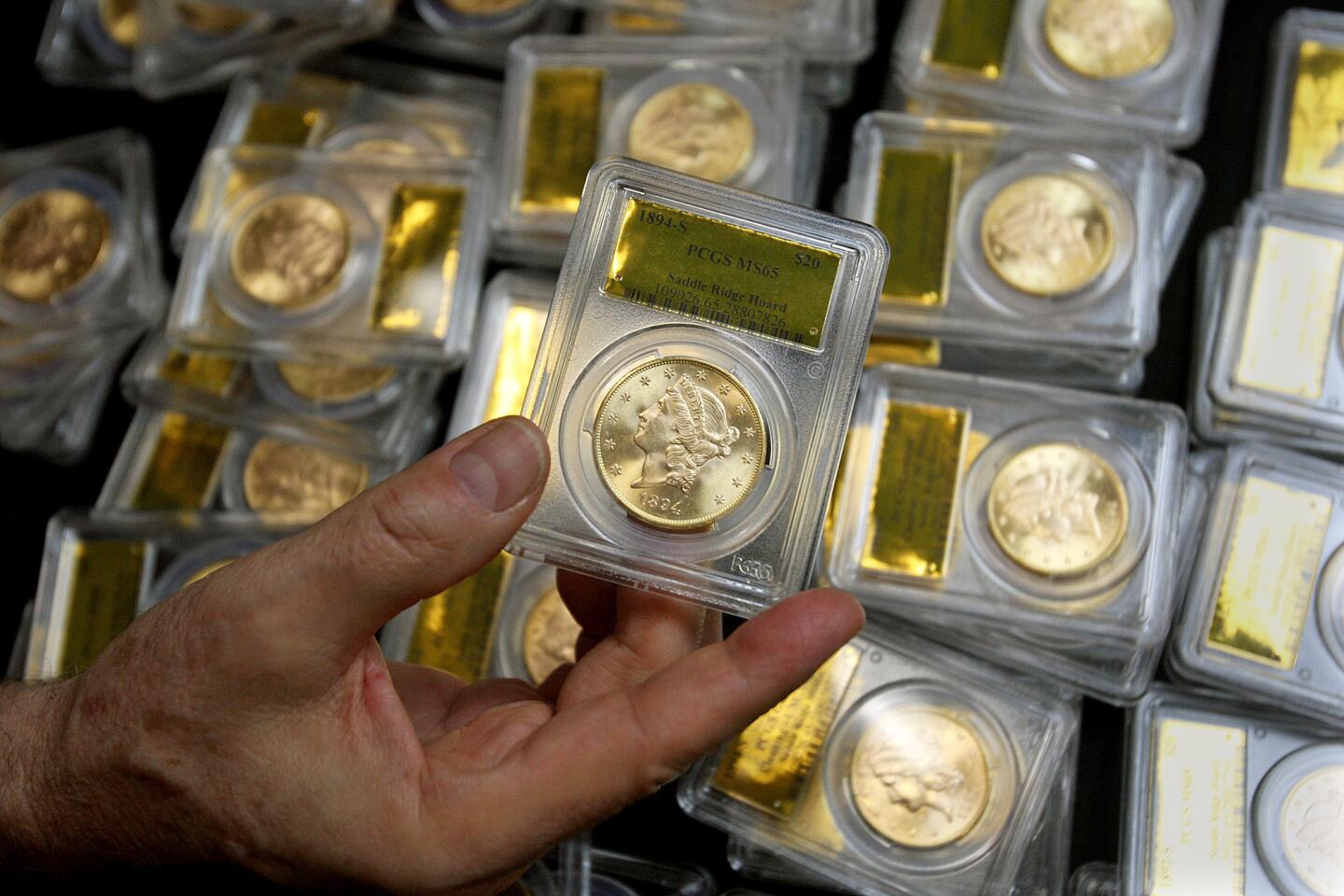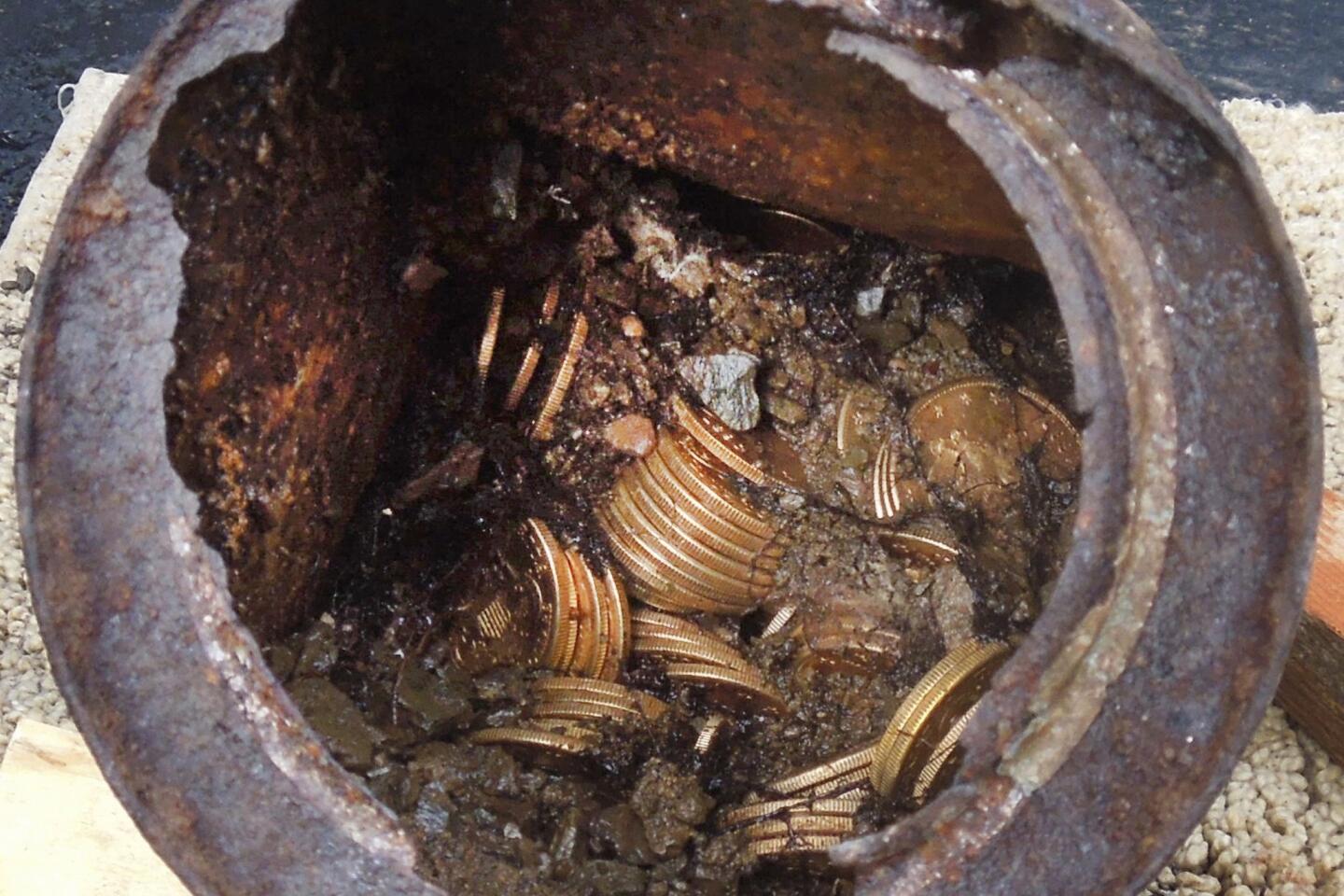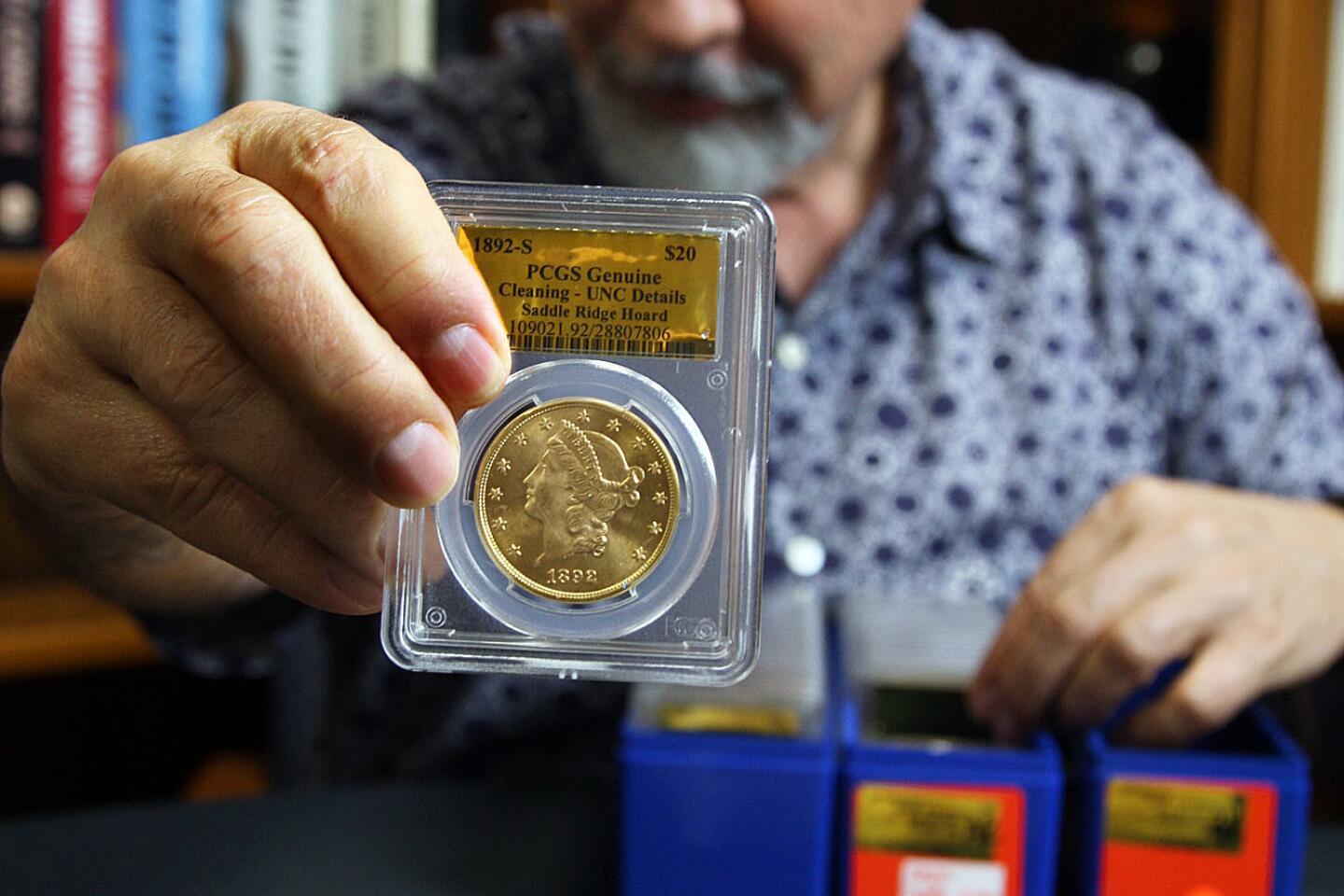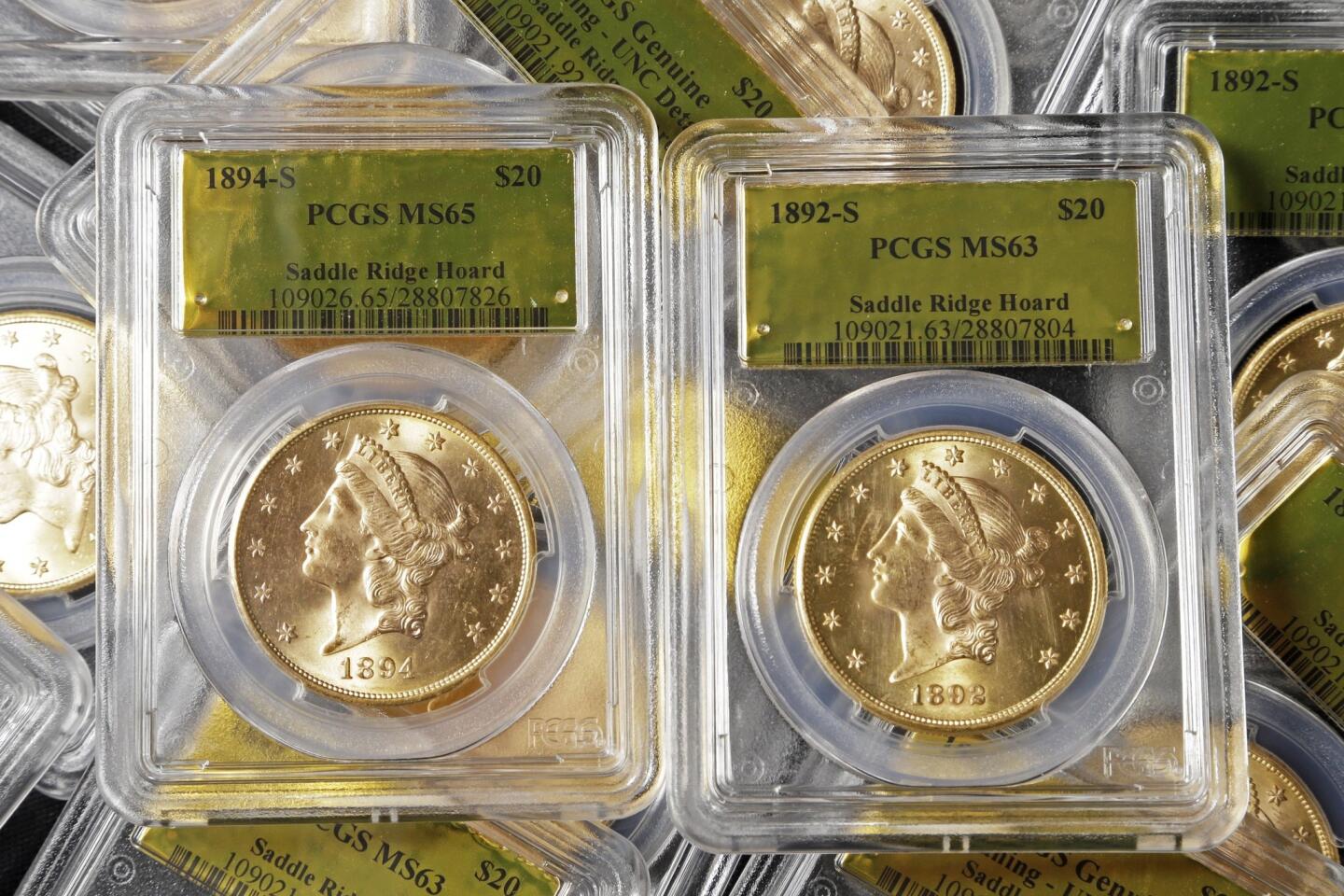California gold coin find spurs no credible claims, expert says
- Share via
A senior expert at the firm representing a Northern California couple who discovered buried gold coins worth $10 million says he has not received any credible claims to the huge find and does not expect to.
Numerous theories have cropped up since the discovery of the Saddle Ridge Hoard was announced last week. One of them, that the coins were tied to a 1901 U.S. Mint theft in San Francisco, appeared to be debunked Tuesday by the U.S. Mint itself.
“We do not have any information linking the Saddle Ridge Hoard coins to any thefts at any United States Mint facility,” U.S. Mint spokesman Adam Stump said in a statement, adding that lawyers have looked into the matter.
PHOTOS: California couple discovers cache of gold coins
The Northern California couple, only identified as John and Mary by Kagin’s, had walked the path on their gold country property for years before they spotted the edge of a rusty can peeking out of the moss in February 2013. When the lid cracked off, they found dirt-encrusted coins, some in better condition than those on display in museums.
The Saddle Ridge Hoard, named for the space on their property, may be the most valuable cache ever found in North America, with an estimated value of more than $10 million. If you melted the coins, the gold alone would be worth $2 million, said David Hall, co-founder of Professional Coin Grading Services in Newport Beach, who recently authenticated them.
Thirteen of the coins are the finest of their kind. One “miraculous coin,” an 1866 $20 piece made in San Francisco and missing “In God We Trust,” could bring $1 million on its own, Hall said. When the motto was added to the coin in 1866, some were still minted without the phrase, he said.
Kagin’s Inc., which evaluated the Saddle Ridge Hoard and is representing the couple who found it, did extensive research to determine whether the coins were ill-gotten, said David McCarthy, senior numismatist for the firm.
McCarthy said he was aware of the U.S. Mint theft story before the cache was discovered, but never suspected these were those coins because he knew what that lot would have looked like.
In 1901, six bags of double eagle gold coins -- 250 $20 coins in each -- went missing from the San Francisco Mint. Chief Clerk Walter Dimmick was convicted of stealing the $30,000 and served time in San Quentin prison for what was later called the Dimmick Defalcation.
The coins were never recovered.
Each bag of coins in Dimmick’s cache would have contained coins with the same date and mint mark, said David McCarthy, senior numismatist for Kagin’s Inc., which evaluated the Saddle Ridge Hoard.
The cache discovered last year contains a mix of coins with 72 distinct date and mint mark combinations, he said. The 1,427 coins, most of them $20 pieces, are dated between 1847 and 1894.
“That’s 12 times as many permutations as we should have if it was the group that Dimmick defalcated with,” McCarthy said, adding that it’s doubtful the mint would have coins made more than 50 years earlier still in its stocks.
Twitter: @Sam_Schaefer
More to Read
Sign up for Essential California
The most important California stories and recommendations in your inbox every morning.
You may occasionally receive promotional content from the Los Angeles Times.















